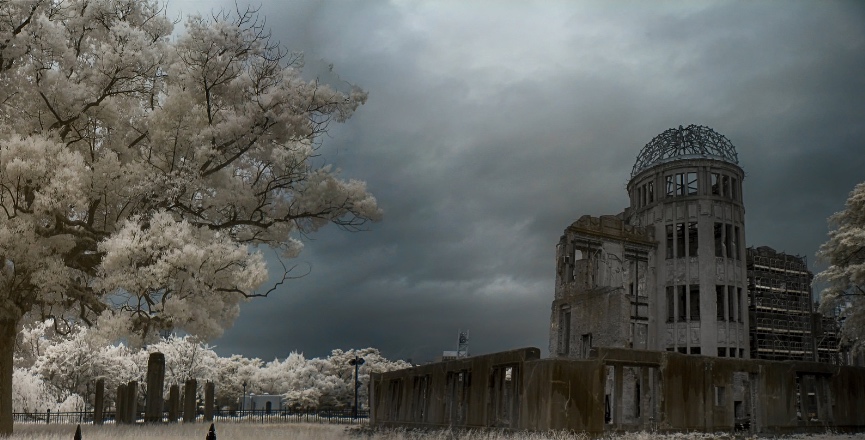On the 75th anniversary of the bombing of Hiroshima and Nagasaki, it is imperative not to historicize the suffering of those who died, but to situate the memory of them in the present struggle against the threat of nuclear militarism.
More than 210,000 people killed in Hiroshima and Nagasaki
75 years ago, two atomic bombs were dropped on the cities of Hiroshima and Nagasaki. By the end of 1945, the bombing had killed more than 210,000 people.
It is believed that about 120,000 people died instantly and that tens of thousands more died in the days, weeks and months that followed that year. In the years that followed, many more people faced leukemia and cancer due to the radiation.
Setsuko Thurlow, who survived the bombing of Hiroshima when she was 13 years old, reminded us just a few years ago: “Each person had a name. Each person was loved by someone. Let us ensure that their deaths were not in vain.”
Let us also remember that the uranium used in the bomb dropped on Hiroshima was refined in Ontario and that research in Ontario and Quebec also played a role in the production of the plutonium used in the bomb dropped on Nagasaki.
There were alternatives then and now
This week, Professor Benoît Pelopidas wrote: “According to the US Air Force’s own review, finalized not long after the end of the war, Japan would likely have surrendered that same autumn even in the absence of atomic bombings or an invasion.”
“Similarly, the Joint Chiefs of Staff expressed skepticism about the use of atomic bombs both before and after the fact.”
Pelopidas thus challenges the long-standing notion that while many were killed in Hiroshima and Nagasaki, it saved the lives of many American soldiers.
He argues that the alternatives to dropping the atomic bombs included: “negotiations, a demonstration of the atomic bomb in an uninhabited area, continued strategic bombing short of the use of atomic weapons, continued economic blockade, and waiting for the Soviets to declare war against the Japanese empire.”
A massive diversion into nuclear militarism
It has also been estimated that the United States, between 1940 and 2005, spent more than $7.5 trillion on nuclear weapons.
The most recent figure is that the nine nuclear weapon states spent $72.9 billion in 2019 on nuclear weapons, a 10 per cent increase over 2018.
And a Congressional Budget Office report last year estimated that the United States will spend $494 billion on nuclear weapons from 2019 through 2028.
This represents a massive diversion of spending away from the public good and speaks to the need to defund nuclear war and divert that spending to alternatives.
PBI founders acted against nuclear weapons
At least three of the founders of Peace Brigades International took extraordinary steps to end the scourge of nuclear weapons.
Murray Thomson was 23 years old when Hiroshima and Nagasaki were bombed. He said that experience made him a pacifist and he spent the next 73 years of his life forming organizations, giving speeches, writing, and initiating campaigns against nuclear weapons.
In 1958, 43-year-old George Willoughby and three others sailed 6,400 kilometres on the South Pacific Ocean to put themselves in between the U.S. Navy and its testing of an atomic weapon. They were arrested near Honolulu and sentenced to 60 days in jail.
And in 1962, 33-year-old Hans Sinn undertook an 8,000-kilometre Vancouver to Berlin peace walk to publicize the need for nuclear disarmament.
Canada’s role today
Significantly, Canada has not signed the United Nations Treaty on the Prohibition of Nuclear Weapons, the first legally binding international agreement to comprehensively prohibit nuclear weapons with the goal of leading towards their total elimination.
Professor Jim Harding has also argued that Canada has long violated the Nuclear Non-Proliferation Treaty of 1970 through uranium mined in Saskatchewan and refined in Ontario fuelling the U.S. nuclear weapons stream.
And Matt Korda, a research associate for the Nuclear Information Project, has commented that Canada “actively participates in NATO’s Nuclear Planning Group” and allows “American and British nuclear-capable vessels to visit our ports.”
As we commemorate the 75th anniversary of the death of more than 210,000 people in Hiroshima and Nagasaki, let us recommit ourselves to stopping this country’s role in supplying, facilitating, participating in and providing cover for nuclear militarism.
In the words of Setsuko’s recent letter to Prime Minister Justin Trudeau:
“The approaching 75th anniversary of the atomic bombings of Hiroshima and Nagasaki on August 6th and 9th would be the appropriate moment to acknowledge Canada’s critical role in the creation of nuclear weapons, express a statement of regret for the deaths and suffering they caused in Hiroshima and Nagasaki, as well as announce that Canada will ratify the UN Treaty on the Prohibition of Nuclear Weapons.”
Brent Patterson is the executive director of Peace Brigades International-Canada. This article originally appeared on the PBI-Canada website. You can reach them at @CBrentPatterson @PBIcanada.
Image: Zach Stern/Flickr



